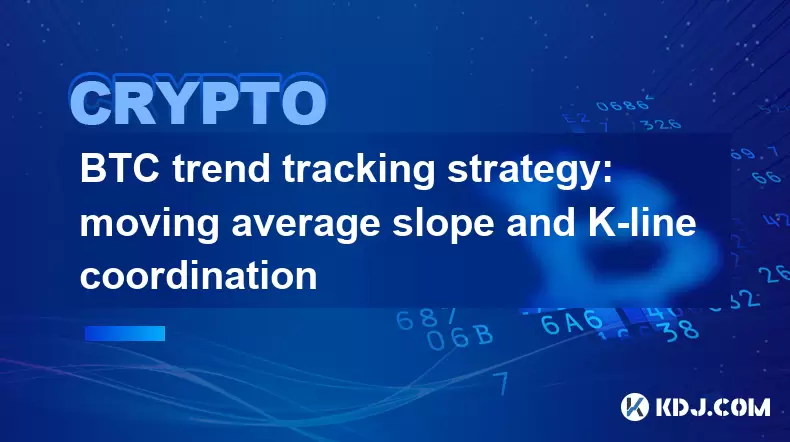-
 Bitcoin
Bitcoin $116400
-0.36% -
 Ethereum
Ethereum $4033
3.40% -
 XRP
XRP $3.302
-1.26% -
 Tether USDt
Tether USDt $1.000
-0.02% -
 BNB
BNB $796.1
1.67% -
 Solana
Solana $177.8
1.89% -
 USDC
USDC $0.9999
0.00% -
 Dogecoin
Dogecoin $0.2314
4.09% -
 TRON
TRON $0.3381
0.14% -
 Cardano
Cardano $0.7989
1.22% -
 Stellar
Stellar $0.4496
-1.84% -
 Chainlink
Chainlink $20.42
9.42% -
 Hyperliquid
Hyperliquid $41.17
0.88% -
 Sui
Sui $3.914
3.77% -
 Bitcoin Cash
Bitcoin Cash $584.7
1.52% -
 Hedera
Hedera $0.2632
-0.54% -
 Avalanche
Avalanche $24.09
3.40% -
 Ethena USDe
Ethena USDe $1.001
-0.02% -
 Litecoin
Litecoin $123.2
1.33% -
 Toncoin
Toncoin $3.318
-0.04% -
 UNUS SED LEO
UNUS SED LEO $8.984
-0.05% -
 Shiba Inu
Shiba Inu $0.00001323
2.85% -
 Uniswap
Uniswap $10.90
4.41% -
 Polkadot
Polkadot $3.999
3.34% -
 Dai
Dai $1.000
0.01% -
 Cronos
Cronos $0.1630
9.64% -
 Bitget Token
Bitget Token $4.484
0.82% -
 Monero
Monero $272.4
2.44% -
 Pepe
Pepe $0.00001173
6.03% -
 Aave
Aave $290.8
2.88%
BTC trend tracking strategy: moving average slope and K-line coordination
BTC trend tracking strategy uses moving average slope and K-line coordination to identify trading signals for Bitcoin, enhancing market navigation.
Jun 02, 2025 at 10:11 am

BTC trend tracking strategy: moving average slope and K-line coordination
In the dynamic world of cryptocurrency trading, understanding and effectively utilizing technical analysis tools can significantly enhance a trader's ability to navigate the markets. Among the various strategies employed, one that stands out for its simplicity and effectiveness is the BTC trend tracking strategy that combines the moving average slope with K-line coordination. This article delves into the intricacies of this strategy, providing a comprehensive guide to its application in tracking Bitcoin trends.
Understanding the Moving Average Slope
The moving average is a widely used indicator in technical analysis that helps smooth out price action by filtering out the noise from random short-term fluctuations. The slope of the moving average provides a visual representation of the trend's direction and strength. A positive slope indicates an uptrend, while a negative slope signals a downtrend.
To calculate the slope of a moving average, traders typically use the following steps:
- Choose a time frame for the moving average, such as the 50-day or 200-day moving average.
- Plot the moving average on the chart.
- Calculate the difference between the current moving average value and the value from a previous period.
- Divide the difference by the number of periods to get the slope.
A steep slope suggests a strong trend, whereas a flat slope may indicate a weakening trend or a period of consolidation.
The Role of K-Line Coordination
K-lines, also known as candlestick charts, provide a detailed view of price movements within a specified time frame. Each K-line represents the open, high, low, and close prices for a given period. Coordinating K-lines with the moving average slope allows traders to identify potential entry and exit points with greater precision.
When analyzing K-lines in conjunction with the moving average slope, traders look for the following patterns:
- Bullish signals: A K-line closing above the moving average with a positive slope suggests a buying opportunity.
- Bearish signals: A K-line closing below the moving average with a negative slope indicates a potential selling point.
Implementing the BTC Trend Tracking Strategy
To effectively implement the BTC trend tracking strategy, traders need to follow a systematic approach that integrates both the moving average slope and K-line coordination. Here's how to do it:
- Select the appropriate moving average: Depending on the trading horizon, choose a short-term (e.g., 20-day), medium-term (e.g., 50-day), or long-term (e.g., 200-day) moving average.
- Plot the moving average on the BTC price chart: Use a reliable charting platform to plot the chosen moving average.
- Calculate the moving average slope: Determine the slope by comparing the current value of the moving average with its value from a previous period.
- Analyze the K-lines: Observe the K-lines in relation to the moving average. Look for K-lines that close above or below the moving average.
- Identify trading signals: Combine the insights from the moving average slope and K-line positions to identify potential entry and exit points.
Practical Example of the Strategy
Let's consider a practical example to illustrate how the BTC trend tracking strategy works:
- Scenario: The 50-day moving average of BTC has a positive slope, indicating an uptrend.
- Observation: A recent K-line closes above the 50-day moving average.
- Action: This combination suggests a bullish signal, prompting a potential long position entry.
Conversely, if the 50-day moving average has a negative slope and a K-line closes below it, this would be a bearish signal, suggesting a potential short position or exit from a long position.
Fine-Tuning the Strategy
To maximize the effectiveness of the BTC trend tracking strategy, traders can employ several fine-tuning techniques:
- Use multiple moving averages: Combining short-term and long-term moving averages can provide additional confirmation of trend strength and direction.
- Incorporate other indicators: Adding indicators like the Relative Strength Index (RSI) or the Moving Average Convergence Divergence (MACD) can help validate signals and reduce false positives.
- Adjust time frames: Experiment with different time frames for the moving average and K-lines to find the optimal setting for your trading style.
Risk Management and Strategy Limitations
While the BTC trend tracking strategy can be highly effective, it's crucial to incorporate robust risk management practices. Here are some key considerations:
- Set stop-loss orders: Always use stop-loss orders to limit potential losses on any trade.
- Position sizing: Manage the size of your positions to ensure that no single trade can significantly impact your overall portfolio.
- Understand limitations: Recognize that no strategy is foolproof. The moving average slope and K-line coordination can sometimes generate false signals, especially in highly volatile markets.
FAQs
Q1: Can this strategy be applied to other cryptocurrencies?
A1: Yes, the BTC trend tracking strategy can be applied to other cryptocurrencies. However, it's important to adjust the parameters, such as the moving average time frame, based on the specific volatility and trading volume of the cryptocurrency in question.
Q2: How often should I review the moving average slope and K-line positions?
A2: The frequency of review depends on your trading style. For day traders, reviewing these indicators every few hours may be necessary. Swing traders might check them daily or weekly, while long-term investors could review them on a monthly basis.
Q3: Are there any specific tools or platforms recommended for implementing this strategy?
A3: Several platforms support the necessary charting and analysis tools for this strategy. Popular choices include TradingView, MetaTrader, and Coinbase Pro, which offer customizable charts and indicators.
Q4: How can I combine this strategy with fundamental analysis?
A4: While the BTC trend tracking strategy focuses on technical analysis, you can enhance it by considering fundamental factors such as Bitcoin's adoption rate, regulatory news, and technological developments. Use these insights to validate or challenge the signals generated by the technical analysis.
Disclaimer:info@kdj.com
The information provided is not trading advice. kdj.com does not assume any responsibility for any investments made based on the information provided in this article. Cryptocurrencies are highly volatile and it is highly recommended that you invest with caution after thorough research!
If you believe that the content used on this website infringes your copyright, please contact us immediately (info@kdj.com) and we will delete it promptly.
- Moat Stocks & Mega-Cap Momentum: July's Standout Performance
- 2025-08-09 12:30:12
- Injective (INJ) Eyes $15.39 Breakout Amidst Explosive Network Growth
- 2025-08-09 12:30:12
- Ripple vs. SEC: XRP Price Soars as Legal Battles End, But Can It Outpace Rising Competitors?
- 2025-08-09 13:10:12
- DWP Management, XRP, and Digital Asset Funds: A New Era for Institutional Investment?
- 2025-08-09 13:30:12
- Pi Network's KYB Verification: A Leap Towards Sustainable Token Launch
- 2025-08-09 13:30:12
- Bitcoin, Dollar Alternative, and Institutional Adoption: A New Era?
- 2025-08-09 13:35:12
Related knowledge

Can the Bitcoin protocol be changed?
Aug 07,2025 at 01:16pm
Understanding the Bitcoin ProtocolThe Bitcoin protocol is the foundational set of rules that govern how the Bitcoin network operates. It defines every...

What happens to Bitcoin transactions once they are confirmed?
Aug 09,2025 at 05:22am
Understanding Bitcoin Transaction ConfirmationWhen a Bitcoin transaction is initiated, it is broadcast to the network and placed in a pool of unconfir...

How are Bitcoin transactions verified?
Aug 08,2025 at 06:57am
Understanding Bitcoin Transaction VerificationBitcoin transactions are verified through a decentralized network of nodes and miners that ensure the le...

How does decentralization make Bitcoin secure?
Aug 08,2025 at 09:35am
Understanding Decentralization in BitcoinDecentralization is a foundational principle of Bitcoin's architecture and plays a critical role in its secur...

What are some common misconceptions about Bitcoin?
Aug 07,2025 at 07:22pm
Bitcoin is Just Like Regular MoneyA widespread misconception is that Bitcoin functions identically to traditional fiat currencies like the US dollar o...

What is the role of nodes in the Bitcoin network?
Aug 08,2025 at 04:14pm
Understanding the Function of Nodes in the Bitcoin NetworkNodes are fundamental components of the Bitcoin network, serving as the backbone that ensure...

Can the Bitcoin protocol be changed?
Aug 07,2025 at 01:16pm
Understanding the Bitcoin ProtocolThe Bitcoin protocol is the foundational set of rules that govern how the Bitcoin network operates. It defines every...

What happens to Bitcoin transactions once they are confirmed?
Aug 09,2025 at 05:22am
Understanding Bitcoin Transaction ConfirmationWhen a Bitcoin transaction is initiated, it is broadcast to the network and placed in a pool of unconfir...

How are Bitcoin transactions verified?
Aug 08,2025 at 06:57am
Understanding Bitcoin Transaction VerificationBitcoin transactions are verified through a decentralized network of nodes and miners that ensure the le...

How does decentralization make Bitcoin secure?
Aug 08,2025 at 09:35am
Understanding Decentralization in BitcoinDecentralization is a foundational principle of Bitcoin's architecture and plays a critical role in its secur...

What are some common misconceptions about Bitcoin?
Aug 07,2025 at 07:22pm
Bitcoin is Just Like Regular MoneyA widespread misconception is that Bitcoin functions identically to traditional fiat currencies like the US dollar o...

What is the role of nodes in the Bitcoin network?
Aug 08,2025 at 04:14pm
Understanding the Function of Nodes in the Bitcoin NetworkNodes are fundamental components of the Bitcoin network, serving as the backbone that ensure...
See all articles

























































































